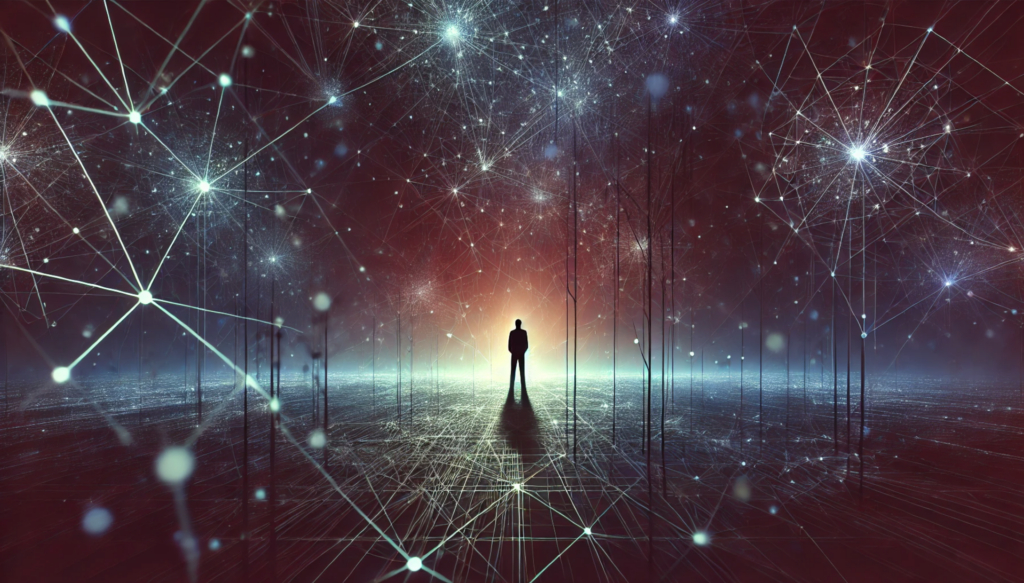In Our Golden Age of Communication, Loneliness is Rampant

The Paradox of Connection
In an era where we can connect with anyone at the touch of a button, why are we lonelier than ever before? The irony of our so-called “Golden Age of Communication” is that it’s coinciding with a mental health crisis that’s reaching epidemic proportions. Depression has become a leading cause of disability worldwide. Anxiety and depressive disorders have sharply increased, particularly among young adults. This paradox—being more connected but feeling more isolated—may stem from the atomization of our lives that digital communication has brought about.
Shallow Relationships in a Digital World
The relationships we form online often lack the depth and quality of those in the physical world. While the quantity of connections has increased, the quality has not kept pace. Online relationships often lack the emotional depth of face-to-face interactions, which are essential for building trust and understanding. You might interact with someone regularly, but without the nuance of face-to-face communication—the body language, the eye contact, the shared physical experiences—it’s difficult to truly know and understand them. Human beings have evolved to evaluate each other through these in-person interactions. When those are stripped away, it’s no wonder that many of us feel disconnected, even as we are constantly “connected.”
The Rapid Shift and Its Impact
This shift has happened at an astonishing speed, leaving us little time to adapt. We now live in a world where atomization and loneliness are significant drivers of the mental health crisis in the United States. Social isolation has been linked to increased rates of depression and anxiety. The profound impact that loneliness can have on mental well-being is evident. The rapid pace of technological change has outstripped our ability to keep up socially and psychologically. We find ourselves more isolated despite being constantly in touch with others. The challenges people face in adapting to these changes can worsen feelings of disconnection and loneliness.
The Decline of Social Skills
Consider the increasing rates of virginity among people aged 18 to 30. Sexual inactivity has risen significantly among young adults in recent decades. This trend might be linked to several factors, including economic challenges and changing social norms. But it’s also likely that the way we interact with each other—largely through screens rather than in person—plays a role. As our social skills atrophy from lack of real-world practice, we become less adept at forming deep, meaningful connections that lead to relationships, both platonic and romantic. Increased screen time and digital communication can negatively impact social skills, particularly among younger generations. Many find it harder to navigate real-world social interactions.
The Future of Hyper-Personalization
Looking ahead, while predicting the future is always uncertain, certain trends seem likely to continue. Our everyday realities are becoming more hyper-curated and hyper-personalized, driven by our online interactions. The increasing use of technology that tracks our every move only accelerates this trend. We’re already seeing the rise of devices that monitor what we look at, what we touch, and how we interact with the world. Targeted algorithms and personalized content are shaping our online experiences. These are becoming more specific to our personal preferences.
A Dystopian Scenario?
It’s not hard to imagine a future where augmented reality (AR) or virtual reality (VR) glasses are as ubiquitous as televisions are today. These could become essential tools for functioning in society. Significant growth in AR/VR adoption in the coming years suggests that these technologies could soon become integral to our daily lives. In such a world, our lives could become so hyper-personalized that we find it increasingly difficult to interact with others whose realities are not centered around us.
Losing Touch with Reality
Digital persons—synthetic beings like androids, gynoids, and personalized digital avatars—might become part of our everyday lives. They could be designed to cater to our every need, both in digital and physical spaces. While true consciousness in machines remains speculative, advancements in AI and robotics suggest that such beings could become more integrated into our daily lives.
Imagine a world where every person lives in their own meticulously curated bubble. Each interaction is tailored to flatter and affirm their desires, while the real world—rich with diverse experiences and genuine connections—fades into irrelevance. This hyper-personalization could lead to a dystopian scenario where people become so absorbed in their curated inner worlds that they lose interest in physical reality. When everyone’s universe is centered around them—where they are the coolest, the richest, the most important—it becomes nearly impossible to connect with others in any meaningful way. The result could be a society where individuals are trapped in their own realities, unable to integrate with others because their experiences and perceptions are so vastly different.
The Choices We Make Today
As we continue to advance technologically, we must ask ourselves: Are we willing to sacrifice the richness of human connection for the convenience of curated realities? The choices we make today will define the fabric of our society tomorrow. The very technologies that promise to bring us closer together could instead drive us further apart, creating a world where loneliness and isolation are the norm, despite the illusion of constant connection. It’s a future that we must approach with caution, ensuring that as we continue to experiment and innovate, we do so with an eye toward maintaining the human connections that make life meaningful.

